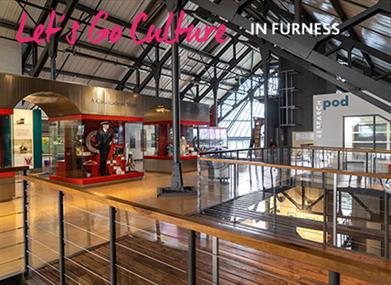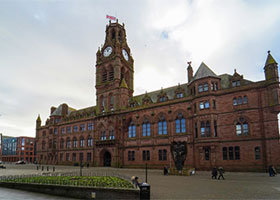- Accommodation
- What's On
- Things to Do
- Food and Drink
- Explore Cumbria
- Areas of Cumbria
- Towns & Villages
- Lakes of the Lake District
- Travel
- Year of the Coast
- Dark Sky Cumbria
- World Heritage Cumbria
- Access for all - Adventure for Everyone
- Historic Houses, Parks & Gardens
- Mountains and Fells
- Wainwrights
- The National Trust in the Lake District
- Cumbrian Castles
- Cumbrian Churches
- Harbours & Marinas
- Tourist Information Centres
- Ideas and Inspiration
- Starring Great Britain: The Lake District, Cumbria
- Lake District, Cumbria Bucket List
- Selfie Guide
- Suggested Itineraries
- Sunny day ideas
- Rainy day ideas
- Spa Breaks
- Romantic Breaks
- Family Holidays
- Dog Friendly Holidays
- Bespoke Holidays
- The Inn Collection Group in the Lake District
- Sustainable Stays
- Caring for the environment
- Live, Work and Study in The Lake District, Cumbria
- Weddings
- Conferences & Event Spaces
- Prizes & Guides
- Blog
- Plan your journey
- Special Offers
You are here: Home > Itinerary Planner
Let's Go Culture in Furness - Barrow

Sitting on the southern tip of the beautiful Furness peninsula, Barrow is widely known for its maritime history and modern defence industries. However, delve a little deeper and you will discover an incredible heritage that is present at every turn. Walk through history by exploring the Barrow-in-Furness section of the 25-mile long Cistercian Way: it travels from Piel Island to Furness Abbey, following in the 12th century footsteps of the Cistercian Monks.
Barrow’s lively event programme and inspiring arts scene offers something for all the family. From the vibrant Festival of Colours in early spring to panto at The Forum, there is a rich entertainment programme to be enjoyed. Many events are free to attend, while others bring local and international talent to the coastal town – from acclaimed comedians to nationally renowned orchestral performances.
Barrow can be easily reached by road via the A590; or by train thanks to its centrally located station. There are excellent bus links across the Lake District and Cumbria.
The Dock Museum
The first port of call for any visitor to Barrow has to be the award winning Dock Museum. This popular attraction, which celebrates its 30th anniversary in 2024, is a fantastic introduction to the history and heritage of the town, delving as far back as the Viking settlements.
From the monks of Furness Abbey through to the bombing raids Barrow endured during the second world war, the museum tells the fascinating story of Furness through the ages. Whether you’re researching your family history or want to learn more about the town’s shipbuilding past, this is the place to start. The museum’s helpful staff will go out of their way to help with any questions you may have.
Younger visitors to the museum will find plenty to enjoy with fun quizzes, themed galleries and an adventure playground, all designed to ensure that the Dock Museum appeals to family members across all generations. There’s even a café onsite offering homemade snacks and cakes.
Throughout the year the museum also hosts an ever-changing exhibition programme, and often showcases the work of local artists. Check out their website for details of events.
Open Hours: Wednesday to Sunday 11am – 4pm.
Free entry.
Getting there & parking: Brown signs from the main A roads direct visitors to the museum. Parking is free for three hours. There’s a cycle shed for those arriving by bike.
The Forum Barrow
In the centre of town, Barrow’s premier entertainment venue, The Forum, features a diverse range of theatrical events and activities. The stage plays host to both internationally renowned performers and local dance and amateur groups, with something to suit all tastes and budgets.
The highlight of 2024 and beyond is the venue’s collaboration with the Royal Liverpool Philharmonic Orchestra which has announced a three-year partnership, bringing unrivalled access to live orchestral music to the heart of Barrow.
You don’t have to be going to a show to visit The Forum: visitors can also grab a brew or a bite to eat at its café, which is open throughout the week except Sundays. It’s conveniently located next to the indoor market and opposite Barrow’s historic town hall. Why not pop in the next time you are in town?
Tickets for performances vary in price so please check the venue’s website for up-to-date information. Concessionary tickets are available.
Getting there & parking: There is a multi-storey car park adjacent to the venue, and others within a 100-yard walk. The train station is a 10-minute walk away.
A Date for Your Diary - National Heritage Open Days.
In September, Barrow Town Hall takes part in the annual National Heritage Open Days – opening its doors for free tours!
The guided tours allow members of the public to visit areas which are usually closed off – including the Mayor’s Parlour and Banqueting Hall. The impressive Grade II listed structure, built from local red sandstone, dates back to 1887 and has acted as the council’s political and administrative hub from the outset.
This unique opportunity takes visitors on a journey back in time to imagine how the Hall has functioned over the years and the part it has played in creating the town and region we know today.
Pre- booking is essential. Ticket details (once they become available) can be found at theforumbarrow.co.uk
Furness Abbey
Dating back almost 900 years, Furness Abbey is one of the finest monastic ruins in England and was once the largest and wealthiest monastery in the north-west. Like many monasteries of its time, it fell foul of Henry VIII’s dissolutions and by spring of 1537 destruction of the church and other buildings had begun.
Some structures survived and for a time it became a manor house and then a farmhouse. The ruins became popular with antiquarians, artists and authors including esteemed Lake District poet William Wordsworth, who is believed to be behind the popularisation of the ruins as a tourist attraction after including it in his Guide to the Lakes.
Today it is of cultural and architectural significance, with the surviving ruins showing how monks would have lived and worshipped there between the 12th and early 16th centuries.
The visitor centre and museum are home to a permanent exhibition of artifacts uncovered at the site including stone carvings and three funerary effigies which were found in the church nave.
Opening times: Opening hours vary by season; for full details, visit the English Heritage website.
Entry is free for English Heritage members; otherwise, variable according to season.
Getting there & Parking: Furness Abbey is located just off the main A590 into Barrow and is an easy walk from bus and rail routes. There are two car parks on-site.
Dalton Castle
Formerly the manorial courthouse of Furness Abbey, Dalton Castle is a 14th century tower that would have featured a courtroom, other business rooms, a jail, guardrooms and stores. Today the impressive monument stands as a proud reminder of the cultural and historical importance of the Furness Peninsula. It is owned by the National Trust and supported by local volunteers who help fundraise to preserve the building and provide guided tours.
Opening times: Dalton Castle is only open on Saturdays.
Getting there: It is located in the centre of Dalton-in-Furness, just off the A590. Parking is freely available in the town.
We hope you enjoy your visit to Barrow in Furness and the Furness Peninsula – located in the Westmorland and Furness area of Cumbria, which spans across the eastern half of the county from north to south. Want to explore this area’s culture and heritage further? Check out all our culture inspired itineraries.




Itinerary Items
| Item |
|---|
| 1 The Dock Museum |
| 2 The Forum |
| 3 Furness Abbey |
Product Information
The Dock Museum
Barrow-in-Furness
Built in a historic nineteenth century dock, the museum is home to a wealth of objects on the social and industrial history of the Furness area. The museum is a great day out for all with a popular playground, attractive Channelside walks, cafe serving hot meals and homemade cakes and gift shop.
The Forum
Barrow-in-Furness
You will find a diverse range of events and activities at The Forum, as we again aim to bring exciting entertainment to Barrow-in-Furness. There should be something for everyone during the current season and we are very proud to welcome Internationally renowned performers alongside local dance and…
Furness Abbey
Barrow-in-Furness
Now a ruin, Furness Abbey was once the second most powerful Cistercian monastery in Britain, after Fountains Abbey in Yorkshire.
Itinerary Distances
| From | To | Distance * (metric) |
|---|---|---|
| The Dock Museum (54.11191,-3.24019) | The Forum (54.11185,-3.22745) | 0.75 |
| The Forum (54.11185,-3.22745) | Furness Abbey (54.13548,-3.19837) | 2.92 |
| Total Distance * | 3.67 miles | |
| Estimated Journey Time | 7 minutes | |
* Approximate distance by road
Receive all the latest news, special offers and information from the Lake District, Cumbria
Cumbria Tourism, Windermere Road, Staveley, Kendal, Cumbria, LA8 9PL



 to add an item to your Itinerary basket.
to add an item to your Itinerary basket.







